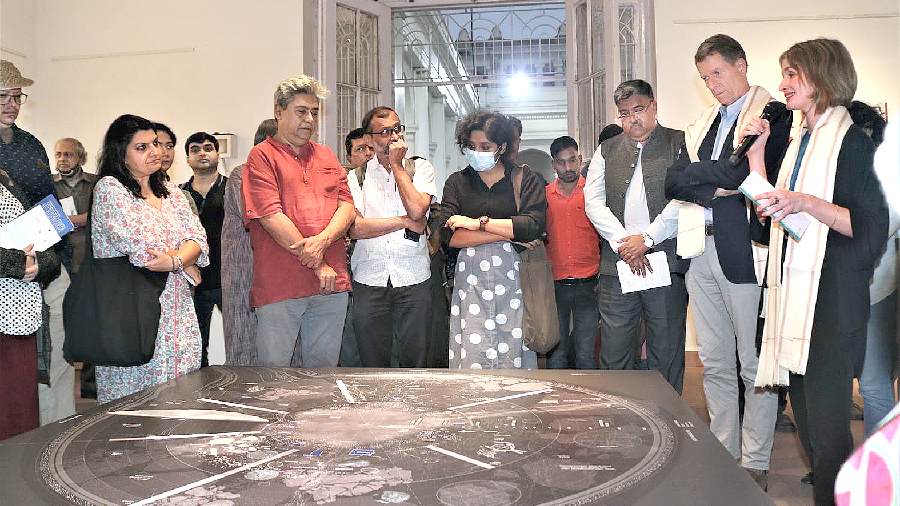The reaction of the Earth to our human actions remained unnoticed until now when a series of extreme climate events are shaking us out of our stupor apart from the climate protests.
An exhibition titled “Critical Zones: In Search of a Common Ground” which started at the Indian Museum on February 16 and will continue till April 2, gives a new perspective on climate change in providing an intersection between science, philosophy and arts thereby engaging visitors with the “critical situation” of the Earth.
This is an exhibition conceptualised by Bruno Latour, a science theorist, philosopher, sociologist and curator, along with Peter Weibel of ZKM, Centre for Art and Media Karlsruhe, Germany. Latour, unfortunately, died last year, and was interested in how humans, animals, and plants inhabited the Earth. “We inhabit a thin layer of the Earth called the critical zone which is now in a critical situation,” said Astrid Wege, director of Goethe-Institut, Kolkata.
“The critical zone changed because of the life happening on it,” said Astrid. “It is a thought exhibition where science and philosophy are best understood in some kind of visual form,” she added.
The original exhibition in Karlsruhe Germany titled “Critical Zones: Observatories for Earthly Politics” was conceived and exhibited at the ZKM, Centre for Art and Media Karlsruhe, Germany from 2020-22. For the Goethe-institut South Asia, a travelling adaptation of Critical Zones is co-produced by the ZKM Karlsruhe and the Goethe Institut Mumbai and curated by Mira Hirtz and Daria Mille. Lena Reitschuster curatorially adapted the edition of the exhibition at the Indian Museum.
The exhibition is divided into five sections, said Lena. It uses multimedia, including photographs, installations, and videos, among other things and has an activation programme including talks and discussions on the subject.
The director of the Indian Museum, Arijit Dutta Choudhury, who also heads the National Council of Science Museums (NCSM) spoke in one of the activation programmes. The city edition of the exhibition includes work by local artists including Nilanjan Bhattacharya and Maksud Ali Mondal.
“It is apt for an interdisciplinary exhibition such as this to be hosted in a multipurpose museum like the Indian Museum which has sections on zoology, geology and botany apart from art and culture. Thousands visit this museum and will get enriched going through this exhibition,” said Sayan Bhattacharya, education officer, Indian Museum.
